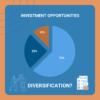This content is for informational purposes only, you should not construe any such information or other materials as legal, tax, investment, financial, or other advice of any kind.
This content is for informational purposes only, you should not construe any such information or other materials as legal, tax, investment, financial, or other advice of any kind.
One of the axioms of rational choice is that, holding everything else constant, individuals prefer more wealth to less. Therefore, once you have a financial portfolio strategy selected, implementing it at the lowest cost will make you better off.
Never purchase a fund with a load (sales) charge. The load is payment to a middle person (i.e., broker) for helping you pick a good fund. What incentive does the broker have to act in your best interest when their compensation increases with the sales charge? Front-end load charges are typically in the range of 3%-8.5%. That means you have to make up this charge just to break-even. This is an unnecessary expense when there are equivalent funds in terms of investment exposures and performance which have no load. Beware of backend loads that disguise the charge by having you pay the same load over time and in an exit fee.
Do you really want to pay marketing, advertising and distribution costs (12b-1 fees) for the fund to get other clients? I don’t think so!
The easiest way to screen for cost is the fund’s expense ratio. The industry average is approximately 1.5%. The compounding effect over many years is substantial. When interest rates were high (over 8%), investors didn’t pay much attention to an expense ratio of 1%. Now that the 10-year Treasury rate is near 2%, an expense ratio of 1% can reduce total return by 50% on an intermediate government bond fund. Have you noticed that until recently money market returns to investors have been near zero for years! That is because the yields on most of the assets in the fund are below the expense ratio, but they can’t charge the full expenses without breaking the buck (constant $1.00 price).
It is no surprise that index funds have had the largest investor growth rate in recent years. Their expense ratios range from 0.02% to 0.25%. The low expenses are available because the cost of active management is eliminated. One might think that active management leads to more than enough additional value to offset the higher expenses. But many empirical studies show that active managers as a whole underperform index funds and very very few have consistent superior performance over time to justify their fees. High performing managers tend to leave the fund to become hedge fund managers with higher compensation for their skills. That leaves investors with the risk of management turnover. Even worse, is the extreme under performance that some active managers generate. This occurs because their incentives are to take big bets for better compensation. This swinging for the fences is not in your best interest, but in theirs. Index funds eliminate managerial risk. Essentially, with index funds, you get the return for the exposures you select at minimal cost. No more. No less. You are in control! What we will provide in this book is how to select the exposures that are right for you.
Reduce the impact of fees on your personal wealth accumulation.
Don’t let high costs eat away your returns! You can use Ripsaw‘s investment screener to keep fees low, see your fees clearly, and pay a low subscription instead of a % of your money. High fees diminish wealth accumulation significantly. That is why we made Ripsaw’s wealth management subscription low, affordable, and with tools to reduce fees over your lifetime.


